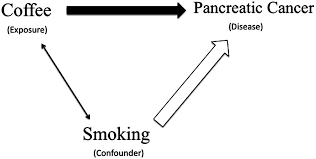Sadiyya Holsey
Dalia Savy
AP Psychology 🧠
334 resourcesSee Units
When selecting a research method, the researcher should write down their goals and what their research question is.
Selecting a research method depends on what a researcher wants to show or prove. For example, if a researcher only wants to show a correlation between two variables, then an experiment would not be optimal. If a researcher wants to show cause and effect between two variables, then an experiment is the best method.
When performing any research, the researcher should be sure of their results to ensure that they show true relationships. ✔️
Validity
Selecting a research method also depends on the validity of the experiments. There are two types of validity: external validity and internal validity.
- External validity refers to how generalizable the results of the experiment are. For example, if the study on a drug is done on an Asian, middle-aged, average-weight man with high blood pressure, can the results be generalized to the population?
- Internal validity is when a study shows a truthful cause-and-effect relationship and the researcher is confident that the changes in the dependent variable were produced only by the independent variable. A confounding variable hurts the internal validity because it creates lower confidence in the research conclusion.
Confounding Variables
Confounding variables limit the confidence that researchers have in their conclusions. To recall from the last key topic, the confounding variable is an outside influence (variable) that changes the effect of a dependent and independent variable. For example, we looked at the correlation between crime ⛓️ and the sale of ice cream 🍨. As the crime rate increases, ice cream sales also increase. So, one might suggest that criminals cause people to buy ice cream or that purchasing ice cream causes people to commit crimes. However, both are extremely unlikely.

Image Courtesy of Pinterest.
When taking a look at this graphic above, smoking becomes a very clear confounding variable when thinking about what causes many chronic illnesses and cancer. It may look like coffee is directly causing pancreatic cancer, since you are focused on it and are measuring its effects, but smoking contributes as well, without you realizing. That rings the question: how accurate is it that exposure to coffee leads to pancreatic cancer or that the two are even correlated? This is why confounding variables are so important!
Here is a quick reminder of the different research methods and their strengths/weaknesses:
| Research Method | Basic Purpose | How Conducted | Manipulated | Strengths | Weaknesses |
| Descriptive | To observe and record behavior | Do case studies, naturalistic observations, or surveys | Nothing | Case studies require only one participant; naturalistic observations may be done when it is not ethical to manipulate variables; surveys may be done quickly and inexpensively (compared with experiments) | Uncontrolled variables mean cause and effect cannot be determined; single cases may be misleading |
| Correlational | To detect naturally occurring relationships; to assess how well one variable predicts another | Collect data on two or more variables; no manipulations | Nothing | Works with large groups of data, and may be used in situations where an experiment would not be ethical or possible | Does not specify cause and effect |
| Experimental | To explore cause and effect | Manipulate one or more variables; use random assignment | The independent variable(s) | Specifies cause and effect, and variables are controlled | Sometimes not feasible; results may not generalize to other contexts; not ethical to manipulate certain variables |
Table Courtesy of Myers AP Psychology Textbook - 2nd Edition
Practice AP Question
The following prompt is from the 2013 AP Psychology Exam (#1).
- In response to declining reading scores in local schools, John wrote an editorial suggesting that schools need to increase interest in reading books by providing students with incentives. Based on research showing a relation between use of incentives and student reading, he recommended providing a free pizza coupon for every ten books a student reads. 🍕
This question had several parts, but let's relate it to research methods.
Could we trust his argument? Does he have the right evidence?
Not really, right? He never ran an experiment and actually implied causation. That is something we could never do. Association does not equal causation.
Just because he found a "relation" between incentives and student reading, it doesn't mean that using incentives could increase student reading. Therefore, we could easily refute John's argument and prove that providing an incentive would not help increase interest in reading books. 📚
When taking a look at a free-response question on the AP Psychology exam, be sure to look out for words such as "caused" or "correlated." You always want to see what is being implied and test its accuracy. Here, we saw the word "relation," and quickly thought correlation does not equal causation.
Browse Study Guides By Unit
🔎Unit 1 – Scientific Foundations of Psychology
🧠Unit 2 – Biological Basis of Behavior
👀Unit 3 – Sensation & Perception
📚Unit 4 – Learning
🤔Unit 5 – Cognitive Psychology
👶🏽Unit 6 – Developmental Psychology
🤪Unit 7 – Motivation, Emotion, & Personality
🛋Unit 8 – Clinical Psychology
👫Unit 9 – Social Psychology
🗓️Previous Exam Prep
📚Study Tools
🤔Exam Skills

Fiveable
Resources
© 2025 Fiveable Inc. All rights reserved.